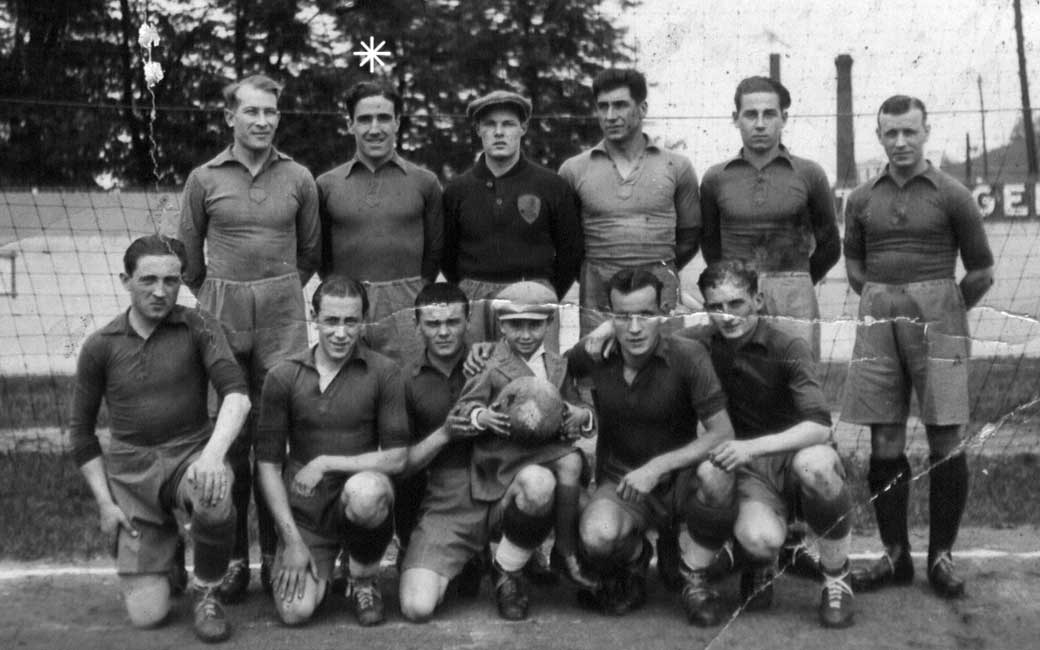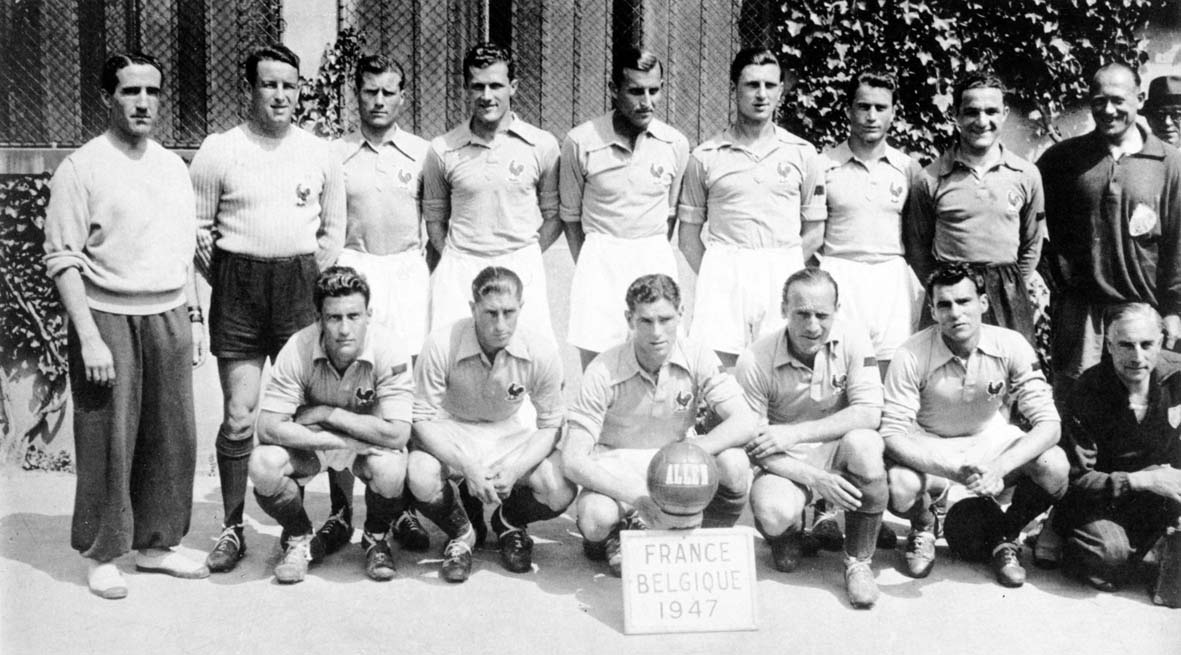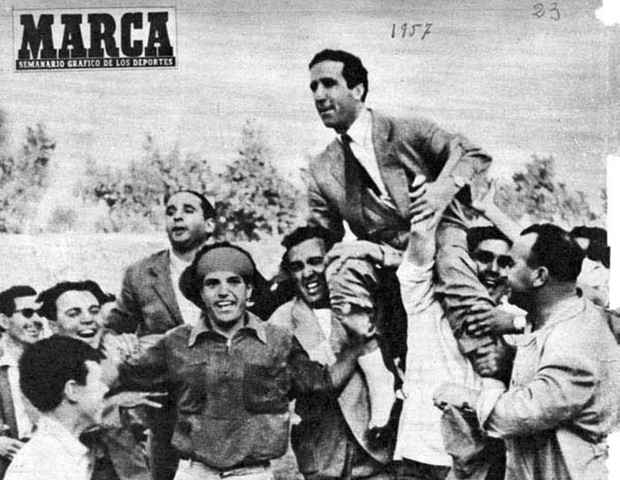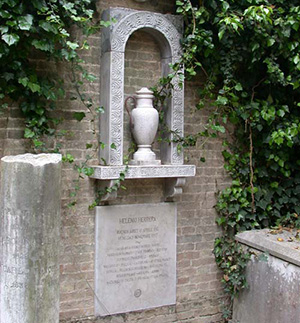1910: born in Buenos Aires on 10 April. His French, Spanish and Argentinian passports say he was born on 16 April 1916, but his original birth certificate shows his real date of birth. He is the son of an Andalusian anarchist, Francisco, and Maria Gavilán Martínez. The birth certificate states that he was born on Calle Thames in Palermo, a residential district of Buenos Aires.
1920: The Herrera family, failing to find their fortune in Buenos Aires, leaves for Casablanca. While disembarking from the ship to the boat to take them ashore (the port was still under construction), Maria, weighing 103 kilos, falls into the water. The locals manage to pull her from the waves (but only after demanding payment upfront).
Francisco, a certified carpenter, builds a small beach house on stilts. Helenio and his big sister, Aurore, attend French schools, as Marocco is a French protectorate. On the way between his home and school, he is always dribbling a small rock or one of his mother’s black stockings rolled up into a ball. He plays football on the beach for hours on end with his Moroccan, Jewish, French, Italian and Spanish friends. In the evening, he takes home the goal posts so that they don’t get stolen. He wants to work as a turner.

1928: begins playing for the club Roches Noires Casablanca, and then for Racing Casablanca (1931–32).
1929–45: football player and then coach in France. He owes this break to the generosity of a friend who offers all his savings to pay his passage from Marocco to France. On board he works as a scullion.
1929–32: signs a contract in Paris with the Club Français and then spends the year 1932–33 at Club Athlétique des Sports Généraux.
1933–35: Club Stade Français. Lives in Montmartre. To top up his meagre earnings – football players were underpaid at the time – he finds a thousand ways to make a living, including selling brass polish to housewives – putting his foot in the door before they have a chance to shut it.

1934: moves from the Stade Français to the Charleville Olympics. He assumes French citizenship to be eligible to play in the French national military team.
1937–39: plays for Excelsior Roubaix-Tourcoing.
1937: pressured by his mother to return to Morocco to marry the beautiful Lucienne Léonard, a starry-eyed girl he met in a dance hall and eight months pregnant.
1937: first child, Francis, born on 12 May in Paris.
1938: Hélène born on 12 July.

1939: called up for military service. As he is working in the Saint-Gobain factory as a specialist in fibreglass, a material used for insulation and also useful in warfare, he manages to avoid being sent to the front. When Pétain takes over government, he is a valued player for Red Star Saint-Ouen (1940).
1941: Linda born on 24 May at Neuilly, Paris.
1942–43: plays in defence for Entente Stade Français-CA, and begins to put into action ‘il béton’ (cement) which will be known as ‘catenaccio’ in Italy. In the meantime, he gives lessons in physical education and discovers his true vocation: teaching football. He gains a first-class diploma in sports massage, thinking that it will be easier to find work as a coach-masseur.
1942: Danièle born on 15 August.
1942: wins a player’s prize in the Coupe de France.
1943–44: player in the Sélection Paris Île-de-France.
1944–45: coach to JS Puteaux (Paris periphery)
1945: escapes, on a sudden premonition and without knowing why, from the town of Lorient in Bretagne, where he had gone to sign a contract. The next day, all the houses, the football stadium and the whole team were annihilated in an aerial bombardment.
1945-48: takes the reins of Stade Français as coach. The team’s chairman asks him to dedicate his time to discovering new talent, but without its coach the team is relegated. As soon as he again takes command of his team, Herrera urges Stade on to a miraculous third place in the finals.

1947–48: coaches the French national team: Domingo, Nuevo, Bruet, Mathiessen, Grégoire, Non, Aston, Gutmunsen, Symoni, Ben Barek and Myra.
1948–49: leaves France to coach Valladolid in Spain on provisional release from Atlético di Madrid, with whom he had a contract.
1949–52: wins from the bench the first championship for Atlético in 1950.
1951: takes Atlético to a second league victory thanks also to the players: Domingo, Tinte, Aparicio, Lozano, Silva, Múgica, Estruch, Ben Barek, Pérez-Payá, Carlsson and Escudero.
1952: Helenio Angel, son of HH and Maria Morilla Pérez, born on 27 January in Madrid. They are unable to marry as Maria is still tied to an existing marriage.
1953–57: moves to Seville, which gains a fifth and a fourth place and then a vice-championship, and reaches second place in the Cup with the formation: Busto, Guillamón, Campanal II, Valero, Pepin, Enrique, Liz, Arza, Quirro, Domenech and Loren.
1953: leaves Atlético at the end of January to coach Màlaga (from 5 February) and then Deportivo La Coruña, where he spots the talent of Luis Suárez.

1957: pressures Seville to release him in June from his contract with them. Football red tape does not allow him to continue to coach in Spain immediately, so he spends a season in Portugal with the Belenenses club.
1957: daughter Rocío is born on 1 February in Seville. (She died on 30 August 2002.)
1958: arrives at FC Barcellona. In the first year, the team comprises: Ramallets, Olivella, Rodri, Gracia, Segarra, Gensana, Tejada, Kocsis, Eulogio Martínez, Luis Suárez and Villaverde.
In the second year it comprises: Ramallets, Flotats, Rodri, Gracia, Segarra, Gensana, Tejada, Kubala, Eulogio Martínez, Luis Suárez and Czibor. On the bedside table in the hospital where he is treated for a fracture, he finds a book on mysticism containing the ‘spritiual exercises’ of the 16th century Jesuit, Ignatius of Loyola, which gives him the idea of football retreats. For the first time in the history of football, players will spend a few days in a monk-like community in green, silent spaces, training, studying tactics and leading a sober life.
1959: leads the Azulgrana club to victory in the Copa del Rey championships on 28 June. Makes his debut at Katowice on the bench of the Spanish national team with a sensational 4–2 win against Poland in the European Cup. Claims victory in all the other international matches against Austria, France, Italy, England and, lastly, Peru, with a 3–1 win in Lima on 10 July 1960.
1960: wins the Coppa delle Fiere, again with Barcellona. Has a secret meeting in Italy in a tollbooth on the ‘motorway of the sun’ (autostrada del sole) with the president of the Milan International Football Club, Angelo Moratti, who up to that point had engaged an endless series of coaches, all of whom had failed. Herrera moves to Inter. Almost in reach of the Italian Serie A scudetto in his first two seasons, Inter takes it in his third.
1962–63: delivers Inter Milan its first Serie A championship. The players, lacking English, call him ‘Signor Mr’.
1964: still at the helm of the ‘black and blues’, Herrera wins the Champions Cup and the Intercontinental Cup. In a run-off, Inter concedes Serie A to Bologna, a championship Inter had already won on the pitch.
1965: Inter, under the Wizard’s guidance and after a memorable comeback against Milan, reaches the pinnacle of success by winning the Serie A championship, the Champions Cup and the International Cup. The team, first in the world to achieve this hat trick, was: Sarti, Burnich, Facchetti, Tagnin, Guarneri, Picchi, Jair, Mazzola, Milani, Suárez and Corso.
1966: pins yet another scudetto (badge awarded to Serie A champions) onto his players’ shirts – the 10th for Inter Milan.
1967: the golden age of Herrera’s Inter comes to an when it loses against Celtic in the Champions Cup final and a few days later relinquishes the scudetto to Mantova in an unbelievable and much talked about match.
1968: leaves Milan to coach Rome.
1969: Meets Fiora Gandolfi during an interview in a retreat at Grottaferrata.
 Wins the Italian Cup in his first season as coach for Rome. He wants to put together a team only from his own stable, but club president Marchini sells the three best young players behind his back – the so-called ‘jewels’: Spinosi, Landini e Capello.
Wins the Italian Cup in his first season as coach for Rome. He wants to put together a team only from his own stable, but club president Marchini sells the three best young players behind his back – the so-called ‘jewels’: Spinosi, Landini e Capello.
1970: fractures his rib and fifth vertebra in a motorway accident in Florence when his Mercedes crashes into the guardrail. Not wishing to abandon his team, he returns to the bench in plastercast from his ankles to his chest. Once or twice, he has to stand up during the game, the ‘plaster armour’ cutting into his underarms, opening wounds and causing bleeding and severe pain. He is cautioned and fined by the referees, as per regulations.
The poison of the totonero (illegal football pools) seeps into AS Roma. A few corrupt players deliberately kick the ball outside the goal, rather than inside it, in order to lose games and win huge bets. It will take three years for the scandal to come to light.
1972: seventh child, Helios, born by caesarian section on Monday 23 October in Paris.
1973: makes a clamorous return to the Inter bench, called in by president Fraizzoli.
1974: suffers a posterolateral heart attack on 8 February following a promising start to the championships. Hererra doesn’t smoke or drink, has a maximum blood pressure reading of 120 and a heartbeat count of 56 per minute. The cause of this health failure can only be stress. He moves to Mazzorbetto (one of the islands of Torcello), in the Venetian lagoon, which can be reached only by rowboat.
1976: comes across a sick child sitting on a bench in the Plaza del Pino in Barcellona. He brings the girl, who was born on 5 January 1974, to Italy for an operation. She is later adopted by him and named Luna.
1977: moves to Rimini with his whole family. As a technicality in the regulations forbids him to sit on the bench, he officially performs the role of ‘technical advisor’.
1980–81: returns to the helm of Barcellona after insistent, late night canvassing on the part of vice-president Juan Gaspar. The team comprises Artola, Ramos, Migueli, Alexanco, Zuviria, Schuster, Olmo, Landaburu, Simonsen, Quini and Esteban. FIFA sends him around the world to train coaches and bring them up to scratch – in Ruanda, Columbia, Algeria, Mauritania and Greece.
There begins a period of intense journalistic activity, writing for several daily papers and press agencies. He provides the copy, drawings and photos for a series called ‘The World Tour of Sport’ (Il Giro del Mondo dello Sport). While in Madrid he suffers a ‘coronary episode’ in the night and returns to Venice to be treated in the Civic Hospital.
1997: dies on 9 November in the resuscitation unit. No-one was able to be there to hold his hand.

His ashes rest, after lengthy negotiations, against a brick wall that was granted, refused and then granted once more thanks to the intervention of Her Majesty, Queen Elizabeth, in a marble niche hidden in the ivy of the Anglican cemetery on the island cemetery of San Michele in Venice.
He is no longer on this earth, he has passed away, he is the past, in the past...
Gaetano Afeltra, Glezös Alberganti, Josechu Carralero, Giacinto Facchetti, Patrick Herrera, Robert Notarianni, Andrea Profeta, Alberto Sanchís, Parham Shahrjerdi and Alberto Vitucci.
Taken from: L’Isola della Memoria (il cimitero di San Michele), Supernova Ed. Venice 2005. (Fiora Gandolfi)